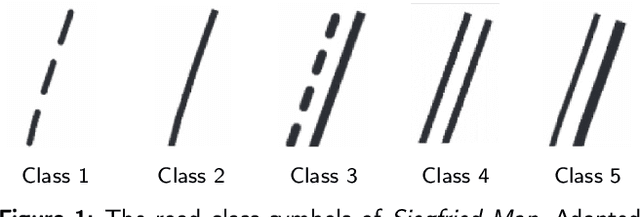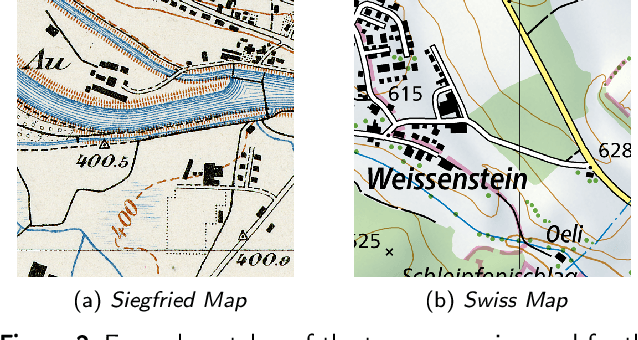Probabilistic road classification in historical maps using synthetic data and deep learning
Paper and Code
Oct 03, 2024



Historical maps are invaluable for analyzing long-term changes in transportation and spatial development, offering a rich source of data for evolutionary studies. However, digitizing and classifying road networks from these maps is often expensive and time-consuming, limiting their widespread use. Recent advancements in deep learning have made automatic road extraction from historical maps feasible, yet these methods typically require large amounts of labeled training data. To address this challenge, we introduce a novel framework that integrates deep learning with geoinformation, computer-based painting, and image processing methodologies. This framework enables the extraction and classification of roads from historical maps using only road geometries without needing road class labels for training. The process begins with training of a binary segmentation model to extract road geometries, followed by morphological operations, skeletonization, vectorization, and filtering algorithms. Synthetic training data is then generated by a painting function that artificially re-paints road segments using predefined symbology for road classes. Using this synthetic data, a deep ensemble is trained to generate pixel-wise probabilities for road classes to mitigate distribution shift. These predictions are then discretized along the extracted road geometries. Subsequently, further processing is employed to classify entire roads, enabling the identification of potential changes in road classes and resulting in a labeled road class dataset. Our method achieved completeness and correctness scores of over 94% and 92%, respectively, for road class 2, the most prevalent class in the two Siegfried Map sheets from Switzerland used for testing. This research offers a powerful tool for urban planning and transportation decision-making by efficiently extracting and classifying roads from historical maps.
 Add to Chrome
Add to Chrome Add to Firefox
Add to Firefox Add to Edge
Add to Edge